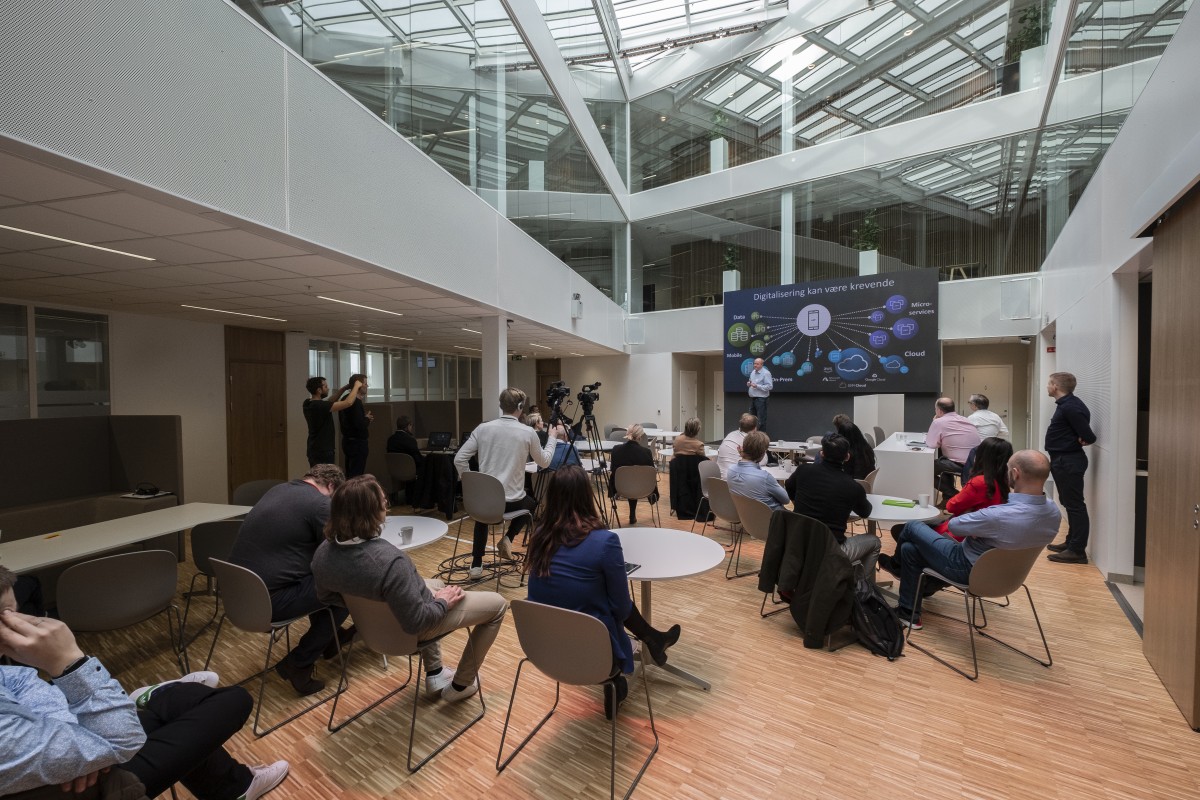Norwegian IT systems integrator Atea has redefined the meaning of “smart office” with its office building in Stavanger, Norway, thanks to connected lighting technology from Signify (Euronext: LIGHT), the world leader in lighting, and network technology from Cisco. Described as a “living lab”, the office acts as a showcase for integrating the latest in connected technology on a single converged network.
Key to smart office capabilities at Atea is Interact Office from Signify — a suite of connected lighting monitoring and management software — and connected sensors and luminaires from Signify. In addition to high-quality, energy-efficient LED lighting and insights for businesses into performance and energy usage, the system offers personalization, productivity, and bio-adaptive lighting features that help keep employees happy and engaged.
Atea wanted the newest technology available. New technologies within Interact include a personal control app for the lighting system, a highly accurate indoor location system that uses a combination of LED lighting and Cisco DNA Spaces, and even LiFi for light-based, high-bandwidth wireless connectivity. Atea staff and building managers can now:
- Adapt their workspaces to their needs – with light-based indoor positioning and a smartphone app, employees can tailor the lighting levels and temperature to their preferences and create the perfect working environment.
- Optimize space requirements and workspace design – Interact Office Space management software offers insight into occupancy rates across buildings, floors, meeting rooms or even at the desk level.
- Eliminate meeting room hassle and find workspaces, facilities, and colleagues – the indoor location system uses visible light communication (VLC) and Interact Office software to create an indoor positioning grid enabling future features as finding free workspaces, pinpointing the location of colleagues, and navigating the floor to find facilities with a high degree of accuracy.
- Get a natural boost – with bio-adaptive lighting installed in the atrium, employees can benefit from enhanced alertness, comfort, and productivity. Brighter, bluer light recipes in the morning can energize them, while softer, redder light recipes towards the end of the day can help them relax.
“At Atea, we're constantly evolving by trying and testing our own products and our partners’ products. In addition to establishing a living lab, it has been crucial to create an environment great for us to work in, to support the employee’s individual needs and of course to focus on the environmental issues we are all facing. By finding out how we can improve our work, how we can increase our efficiency and how we can make our business smarter by using, for instance, smart lighting and smart building technology in general,” said Espen Riska, Director at Atea Stavanger. “We have one single network powering our lighting and our WiFi, getting information from all the sensors. It's one single converged network.”
“The converged IP network powers and integrates all of the building’s different systems with IEEE standards, and efficiencies are gained through this approach,” added Derek Wright, Global Sub-Segment manager Office, Education and Municipal buildings at Signify. “With Cisco and Atea, we’ve gone beyond just theory and have implemented a real-world example of the smart office of the future. The use cases that can be enabled from this is where the value for Atea can be driven.”
At Atea Stavanger, the connected lighting system is an integral component of the building’s IoT platform. Connected luminaires and their multi sensors transmit data via the IP network, which is deployed using Cisco Ethernet switches. Many of the building’s luminaires connect to the converged infrastructure using Power-over-Ethernet (PoE) —meaning these luminaires are powered and controlled through the Ethernet infrastructure, without the need for separate electrical wiring, and can easily transmit collected data to the cloud.





